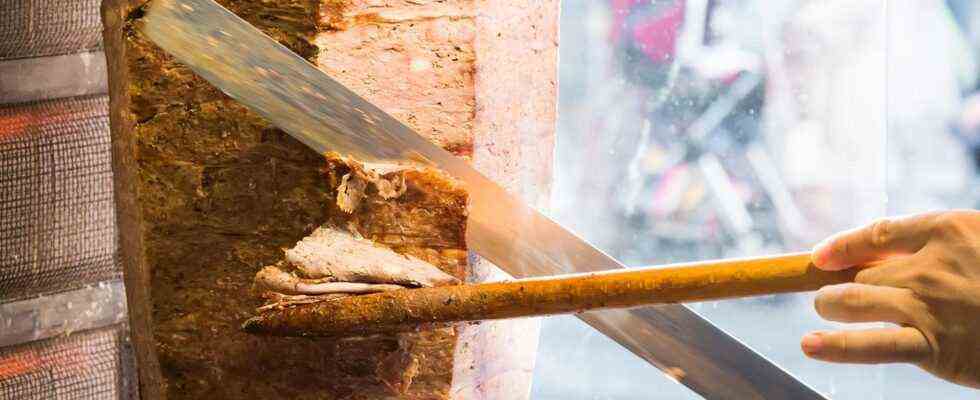Who invented the doner kebab, a flatbread filled with meat and salad, is still unclear. Old travel reports suggest that meat on a spit has a long tradition in Anatolia. Serving the meat in a piece of bread and offering it to take away seems to be an invention of Turkish immigrants in Germany who came up with this idea in the early 1970s. According to the Association of Turkish Doner Kebab Manufacturers, Kadir Nurman is said to have created the first doner kebab at Zoo Station.
One thing is clear: the doner kebab quickly developed into a popular snack, initially only among migrants, then also among student circles. In Germany alone they generate around 60,000 employees in the kebab industry a turnover of 2.4 billion euros. So it’s a worthwhile business. And most kebab shops have long since stopped putting the meat on the spit themselves, but instead buy it from one of the major producers. 400 tons of doner kebab are produced every day in Europe. But not everything that is called kebab may also be kebab. Because fresh vegetables and meat are expensive, in return, kebabs are sometimes sold for less than three euros. How can that work? When the most expensive ingredient, meat, is replaced. And preferably in such a way that the customer does not notice it. In our photo series we explain how cheating works.
But what can consumers do? Experts advise asking the operator directly what meat he is using. The degree of doneness is also important: If there is a lot of mince in the kebab and it has not been fully grilled, dangerous germs can be in the meat.
For the documentary series with food expert Sebastian Lege, “ZDF” took a look behind the scenes of the billion-dollar market and shows how starch and breadcrumbs are used to adulterate. You can find the entire documentation in the ZDF media library.

